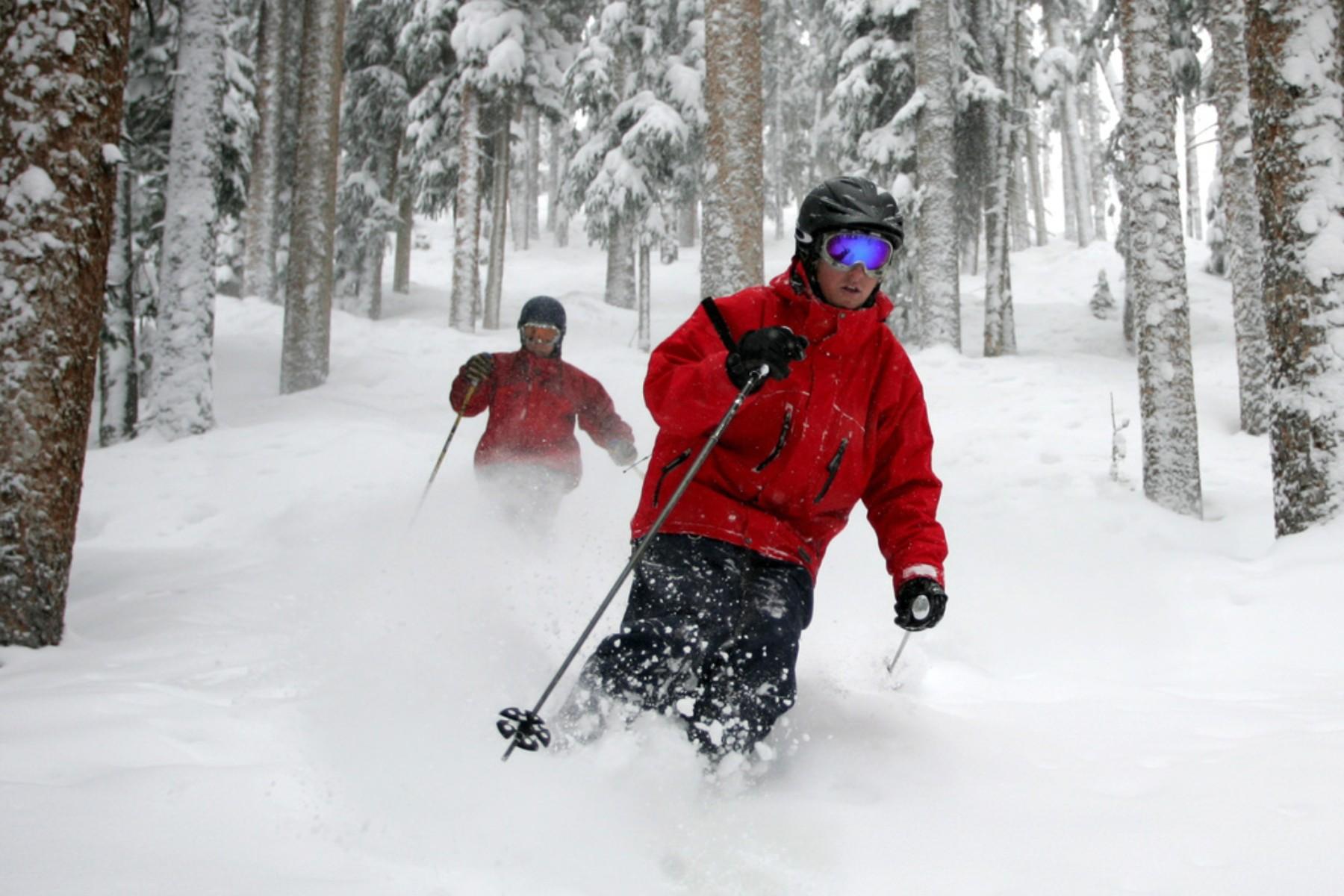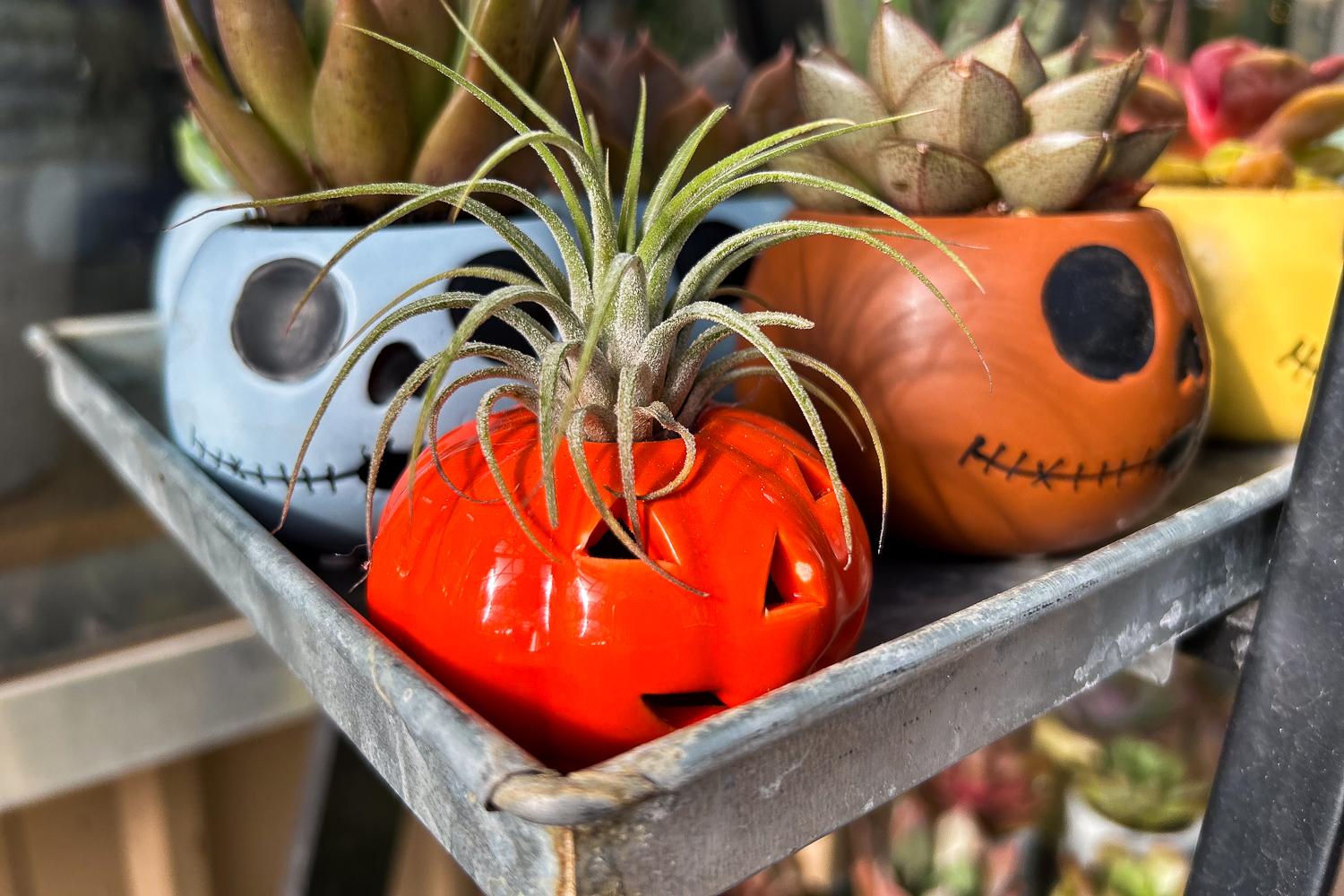
You know how fall – even winter – can be in Colorado: 70s and sunny, then temperatures plummet. Swings that can drive gardeners nuts.
Colorado Matters visited Phelan Gardens in Colorado Springs, where Senior Host Ryan Warner spoke with head grower Sam Nilsson about fall gardening. Below is a Q&A from their conversation.
This interview has been edited for length and clarity.
How to overwinter your new perennials
Ryan Warner: What is the most common question you get at the greenhouse this time of year?
Sam Nilsson: The most common thing we're asked is how to overwinter your freshly planted perennials and trees.
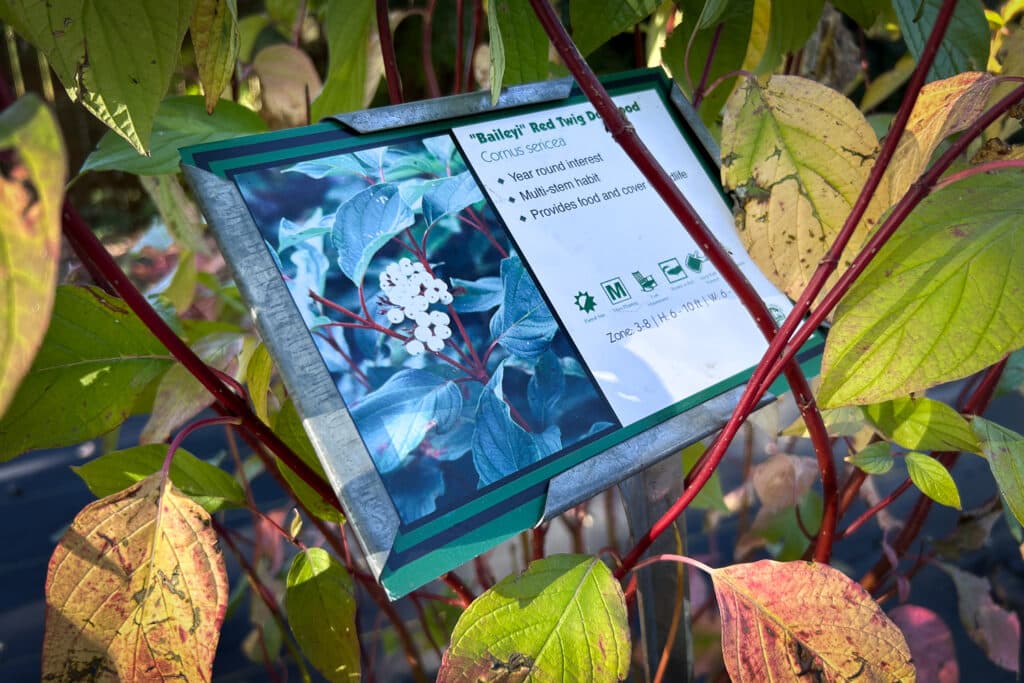
Warner: Overwinter. Just explain what that means. For a black thumb like me.
Nilsson: Yes. Overwintering is when the temperatures get really cold, the snow starts coming and these plants start to die back. We wanna make sure we're caring for them properly during that weather. So they wake up and come back nice and beautiful in the springtime for us.
Warner: But that means they're not truly dead, I guess.
Nilsson: Correct. They go into a state of dormancy, so they look dead on the surface, but underground, their roots are still spreading and searching for that moisture and needing to be cared for to come back adequately.
Warner: Now, when we're talking about perennials, do you want to be more specific about the sorts of plants we're talking about?
Nilsson: There's a lot of perennials here. Your trees and shrubs are gonna fall into that category, and then herbaceous perennials could be anything from yarrow to your bleeding hearts to your Russian sage, that kind of stuff. Anything that can handle that cold and come back in the springtime for us.
Warner: So we are mindful of the fact that there's still life going on below the soil, and what does it mean to take care of plants then over the winter?
Nilsson: The most important thing here for overwintering is winter watering. It is so dry here and with those temperature fluctuations that you mentioned, you have to get out there and water those plants at least once a month, maybe even twice a month. If we have a warmer winter with how dry it is, those roots still need that moisture and we just don't get enough snow here and it's just so dry that we have to get out and water 'em.
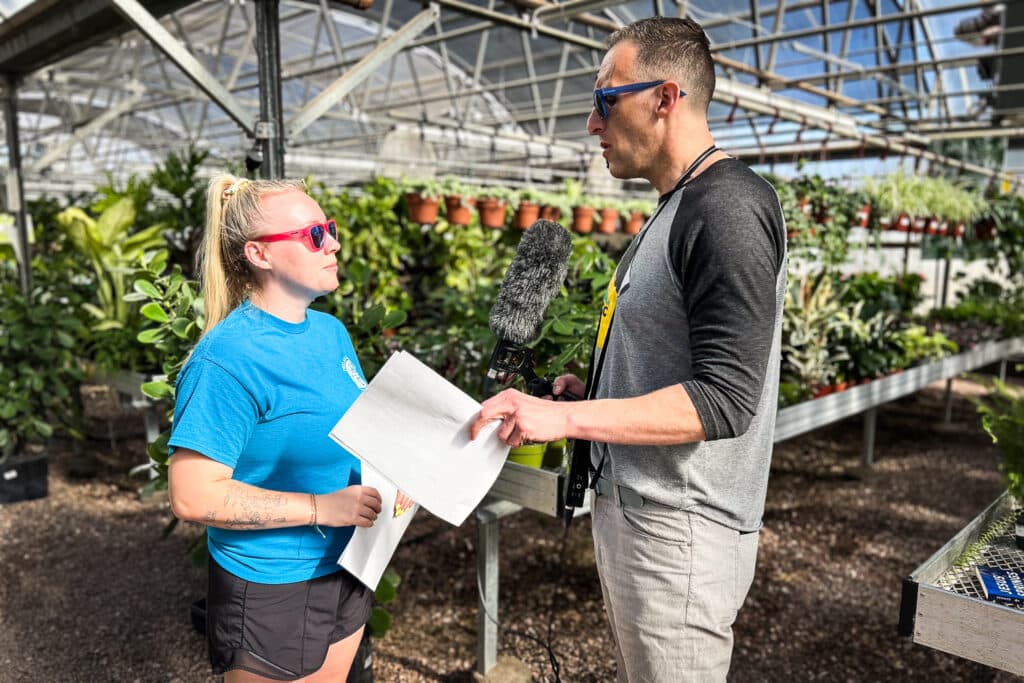
Warner: Now, you probably don't want water on very, very cold days. I mean, at that point, you're just forming ice potentially. So what are the signs I should water
Nilsson: Correct. If it's over 40 degrees, is a good time to get out and water. So that's typically why we say once a month. But like I said, if it's exceptionally warm, you might do it twice a month, but definitely if it's over 40 degrees during the morning time, so it has the day to absorb that moisture.
What about raised beds and pots?
Warner: What if you have beds, raised beds for instance, or potted plants over the winter?
Nilsson: So your raised beds will still fall into that same care. Usually mostly because the roots can still get into the ground below the raised beds. So that care will be similar to what we just discussed. You can overwinter plants in pots, it is a little bit more tedious because you don't have that ground insulation there. So we'll recommend moving those containers to the sunniest side of your house, up against your house for that warmth. And then you're still winter watering, but probably a little more often, maybe three or four times a month, rather than once or twice, you can still mulch them and kind of try to emulate that insulation the ground provides.
How should gardeners at altitude adapt?
Warner: Now I am thinking about our friends at altitude. So here we are, you know, along the Front Range and in the shadow of Pikes Peak, but if you are up in the mountains and those warmer days are a little fewer and farther between, how am I adapting at an alpine environment?
Nilsson: Great question. Still very similar. Yes, it might be a little colder, might get a little more snowfall, but at the end of the day, it's still very dry and typically a lot more windy up there so that ground is still going dry just as much as it would down here. So you're still winter watering, that's still very important.
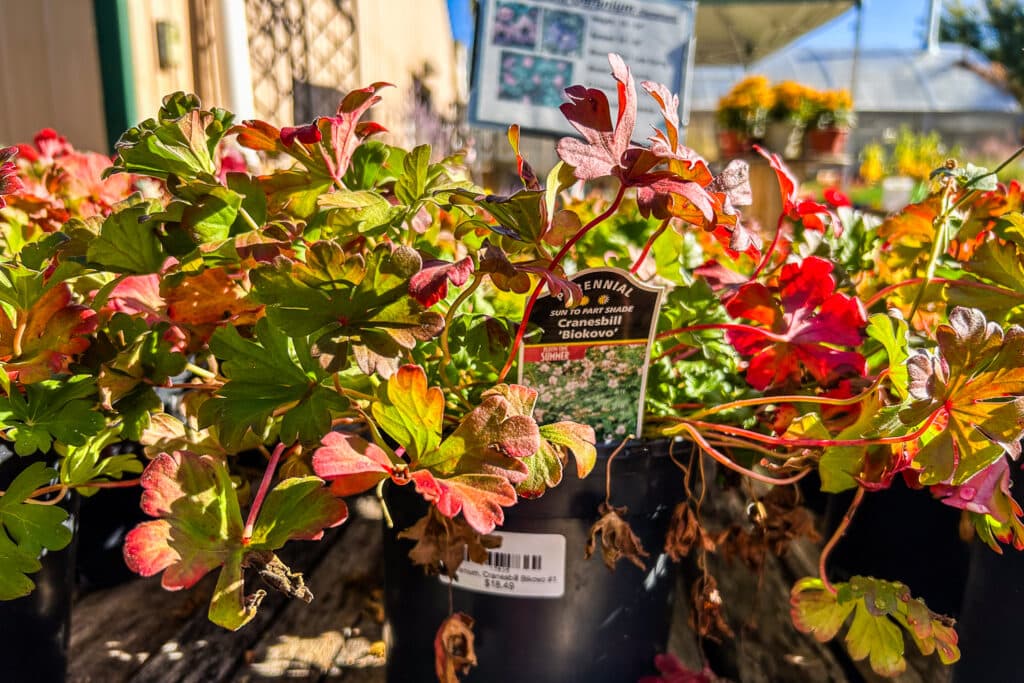
First frost, big temperature swings, and the “igloo effect”
Warner: What might gardeners want to think about in terms of the first frost?
Nilsson: Yes, the first frost, typically, we're looking at mid-October for that first frost. Sometimes we get a random one before that, which can be quite shocking to those plants. So best practices are gonna be mulching, that's gonna help insulate the ground, help hold in that moisture. And then if we get an abnormal first frost, there are a few other things you can do. One would be watering right before that frost hits, as weird as that sounds. Then what happens is the water is gonna freeze around that root structure and create almost like an igloo effect rather than the roots themselves taking that shock and it damaging that root ball. So watering right before the mulching is great. And then there are things like frost cloth or using an old cotton sheet of sorts that you can put over those plants to kind of help protect from that initial shock as well.
Warner: Do you have a favorite mulch?
Nilsson: There's a lot of options. Just any good bark mulch is great. We definitely don't recommend rocks as mulch. It gets way too hot. But any good old bark mulch typically will do the job.
Listener question: How do I save the dirt in my containers for next year?
Warner: Jessica from Denver grows beans, squash, tomatoes, herbs, and more on her patio. She asks, ‘How do I save the dirt in my containers for next year?’
Nilsson: There are a couple of different ways you can go about it. Some people will put their containers away with the soil in it. Some people will leave their containers out so they can get the snowfall on 'em. Either way really is fine. Personally, I like to leave them out for the snow. That way, your soil doesn't get so hydrophobic over the winter. Soil can get so dry that it will repel water rather than absorb it. So sticking them behind a shed or something and they can still get a little snowfall on 'em is great. And then in the springtime, you just might add a little compost, mix that in to get that organic matter back in there, and you can reuse the soil for a season or two, maybe even three. And then I would switch it out
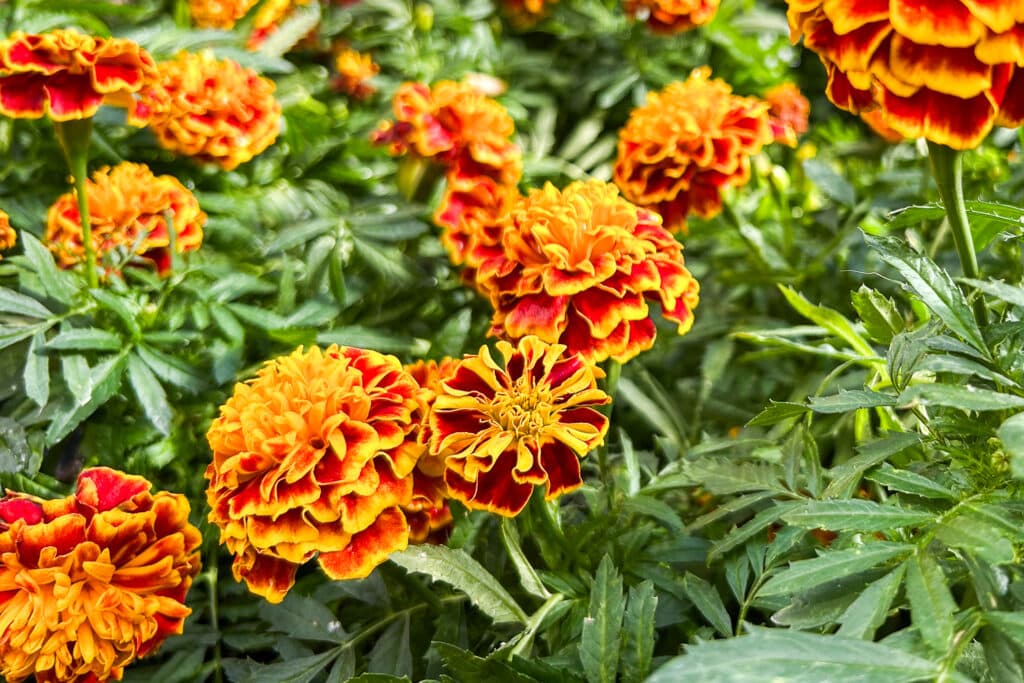
Warner: Because what happens after say three years?
Nilsson: The soil does lose its nutrients over time. And so even in garden beds, we recommend adding in that compost. Usually in the springtime for those nutrients, but especially in your soil, in those containers, every time you water or plant in 'em, you are using up those nutrients.
Listener question: Best cover crops?
Warner: Sharon in Boulder has a few questions. What's the most effective cover crop for a vegetable garden?
Nilsson: I would say for this, it depends on what your goal is. So some cover crops like clover or vetch will help fix nitrogen in your soil. If you wanna just add some organic nutrients back in, you can use rye or oats and then buckwheat is really good for suppressing weeds. And then the last one, if you have really compacted soil, you'd wanna use a root crop like a Daikon radish. So it just depends on what your goal is with those cover crops.
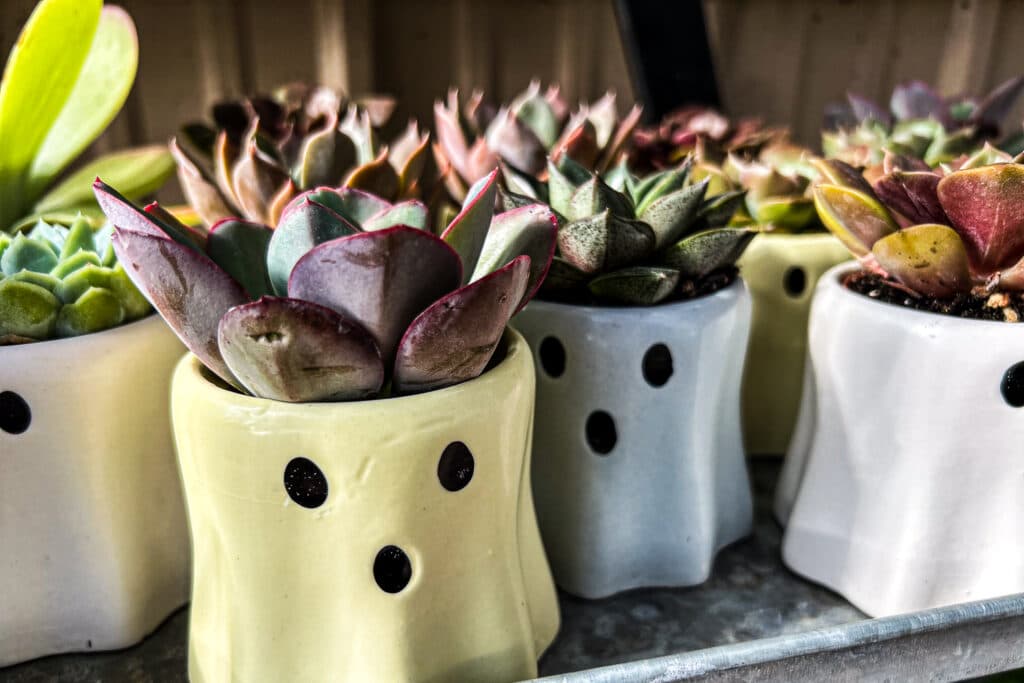
Listener question: Garlic — nutrients and keeping dogs out
Warner: Sharon has a question about garlic. It's how to keep her dog from digging up bulbs. News to me that dogs even like garlic.
Nilsson: They can smell it, so they'll try to find it. And there are a couple of different ways. Your best bet is gonna be your physical barriers. I know one of my coworkers mentioned using pine cones as mulch, which was new to me, but I guess that can help deter them, or even putting like chicken wire or something over 'em to help prevent them from getting to it.
Warner: The pine cones, those are sort of prickly.
Nilsson: Yes. They don't like how it feels on their feet, so they'll maybe not dig at it as much. Sharon was curious about nutrients for garlic. We typically recommend bone and blood meal, but my garden center manager mentioned that dogs really like the smell of bone and blood meal. So maybe skipping that step and using more compost and some other micronutrients rather than that bone and blood meal might help with your dog as well.
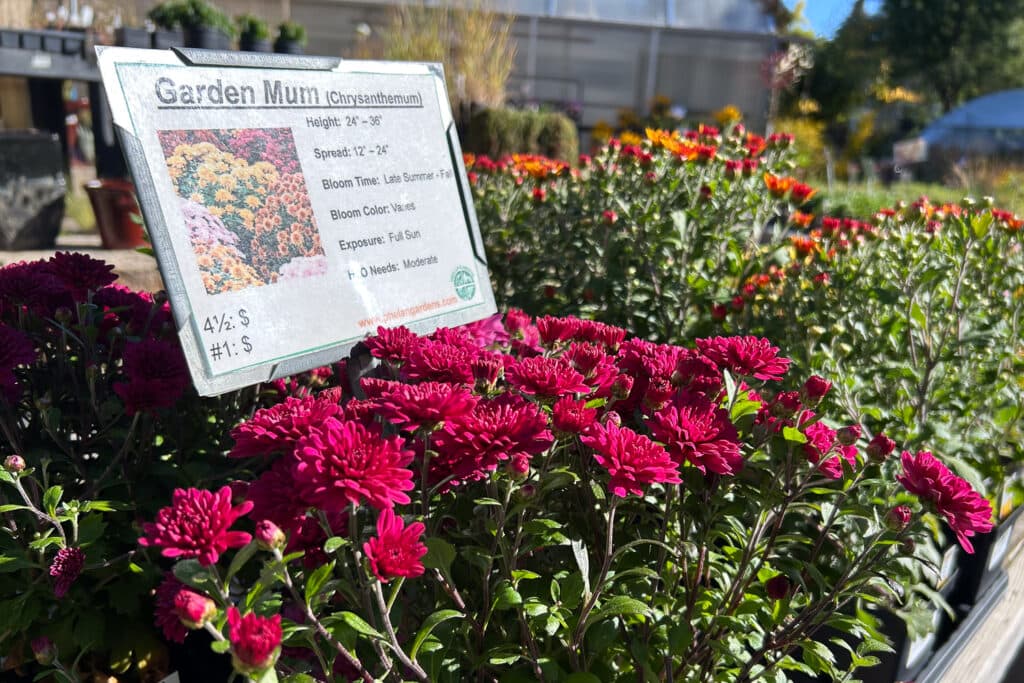
Listener question: Tomatoes struggled — what now? And what about pests?
Warner: Mark McGee says his tomatoes had a rough year — it was hot and dry. Any suggestions for him moving forward?
Nilsson: I just wanna let Mark know that he is not alone. It was a very hard season for a lot of tomato growers between the hot and dry and then the weird wetness that we had. But the biggest thing with tomatoes is that they are very heavy feeders. So you want to come up with a fertilizer regimen that works for you and really stick to that. They need a lot of nutrients. And then as far as watering, which is sometimes hard to control with the rain we got this year, but tomatoes really don't like inconsistent watering. They want deep, less frequent, consistent watering.
And the other tip I have is keeping them trimmed. Sometimes people will let their tomato plants kind of just start growing all willy-nilly, and that prevents them from putting their energy into that fruit production. So, trimming off some of the lower foliage, trimming off some of the suckers, and letting those plants really focus on their fruit rather than their foliage.
Warner: Diatomaceous Earth. He says he uses this powder to control pests, but he still had bugs. What gives?
Nilsson: It is very effective on soft-bodied pests. However, the issue we run into with it is that it is a very fine powder. So once you sprinkle it on, if it rains or your hose splashes on it at all, it becomes ineffective, and you have to reapply it quite a bit. So you really have to keep up on it. Consistency is important. Diatomaceous Earth can also be harmful to some of our beneficial insects. Diatomaceous Earth, essentially, is a very small crystallized powder. So if your pets get into your garden at all, it can kind of harm their mouths a little bit, or those beneficial insects like I was saying, it's effective kind of against all bugs. So it's kind of tricky on if you want to go with it or not.
Looking ahead to spring: What’s smart to plant now?
Warner: Okay. Looking ahead to spring, what is smart to plant now?
Nilsson: Yes. Fall is still a great time. For your pansies, your marigolds. Ornamental cabbage and kale and peppers, those are all really great fall plants. They can tolerate the cold. Looking ahead to spring, specifically, now is still a good time to get perennials, trees and shrubs in the ground. We still have a little bit of time there. We're also coming up on that time for your fall bulbs, like your tulips, your alliums, daffodils, and then garlic. Now is the time to plant your garlic.
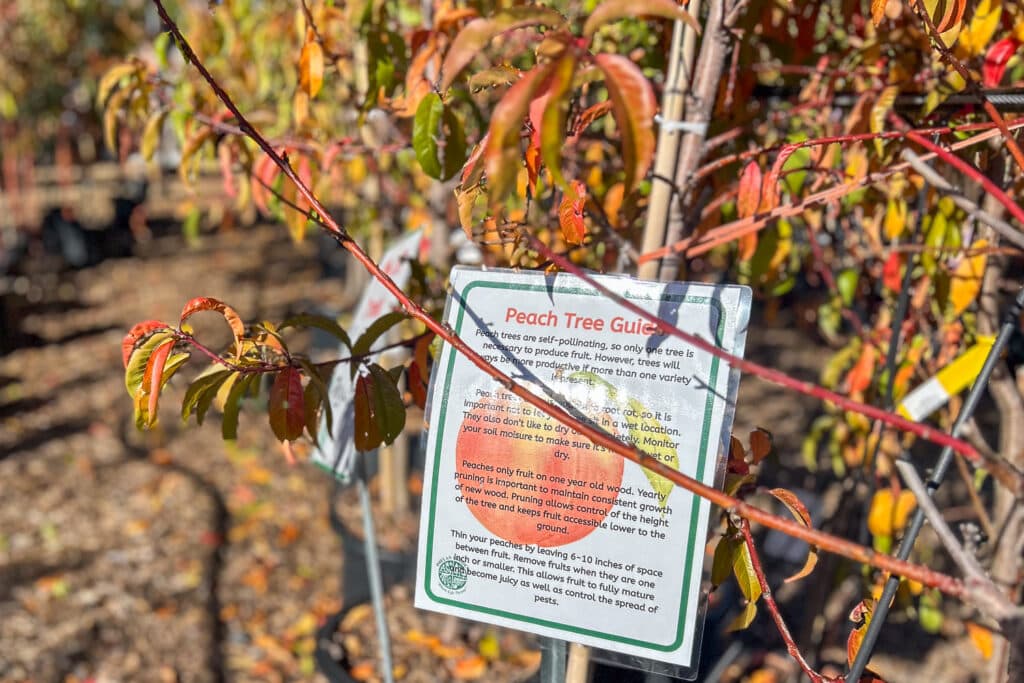
Warner: You said it’s not too late to plant trees?
Nilsson: It's not. Trees, they typically, especially if you're buying 'em from any garden center, they have a really well-established root system already. So getting 'em in the ground even now still gives them a time to start spreading those roots. And then, as long as you're doing your winter watering, like we were talking about earlier, they'll be just fine throughout the winter.
Warner: So the fall to-do list: mulch water when it's warm enough, protect against those early frosts and plant bulbs. Maybe garlic, refresh soil. Think about trees. Sam, this has been so nice.
Nilsson: It's so nice to see you again
Editor’s Note: Phelan Gardens is a sponsor of KRCC but has no editorial influence.

